
- Home
- IPL 2025
- The Great Language Divide
- News
- Premium
- THE FEDERAL SPECIAL
- Analysis
- States
- Perspective
- Videos
- Education
- Entertainment
- Elections
- Features
- Health
- Business
- Series
- Bishnoi's Men
- NEET TANGLE
- Economy Series
- Earth Day
- Kashmir’s Frozen Turbulence
- India@75
- The legend of Ramjanmabhoomi
- Liberalisation@30
- How to tame a dragon
- Celebrating biodiversity
- Farm Matters
- 50 days of solitude
- Bringing Migrants Home
- Budget 2020
- Jharkhand Votes
- The Federal Investigates
- The Federal Impact
- Vanishing Sand
- Gandhi @ 150
- Andhra Today
- Field report
- Operation Gulmarg
- Pandemic @1 Mn in India
- The Federal Year-End
- The Zero Year
- Science
- Brand studio
- Newsletter
- Elections 2024
- Home
- Delimitation Debate
- IPL 2025
- NewsNews
- Analysis
- StatesStates
- PerspectivePerspective
- VideosVideos
- Education
- Entertainment
- ElectionsElections
- Features
- Health
- BusinessBusiness
- Premium
- Loading...
Premium
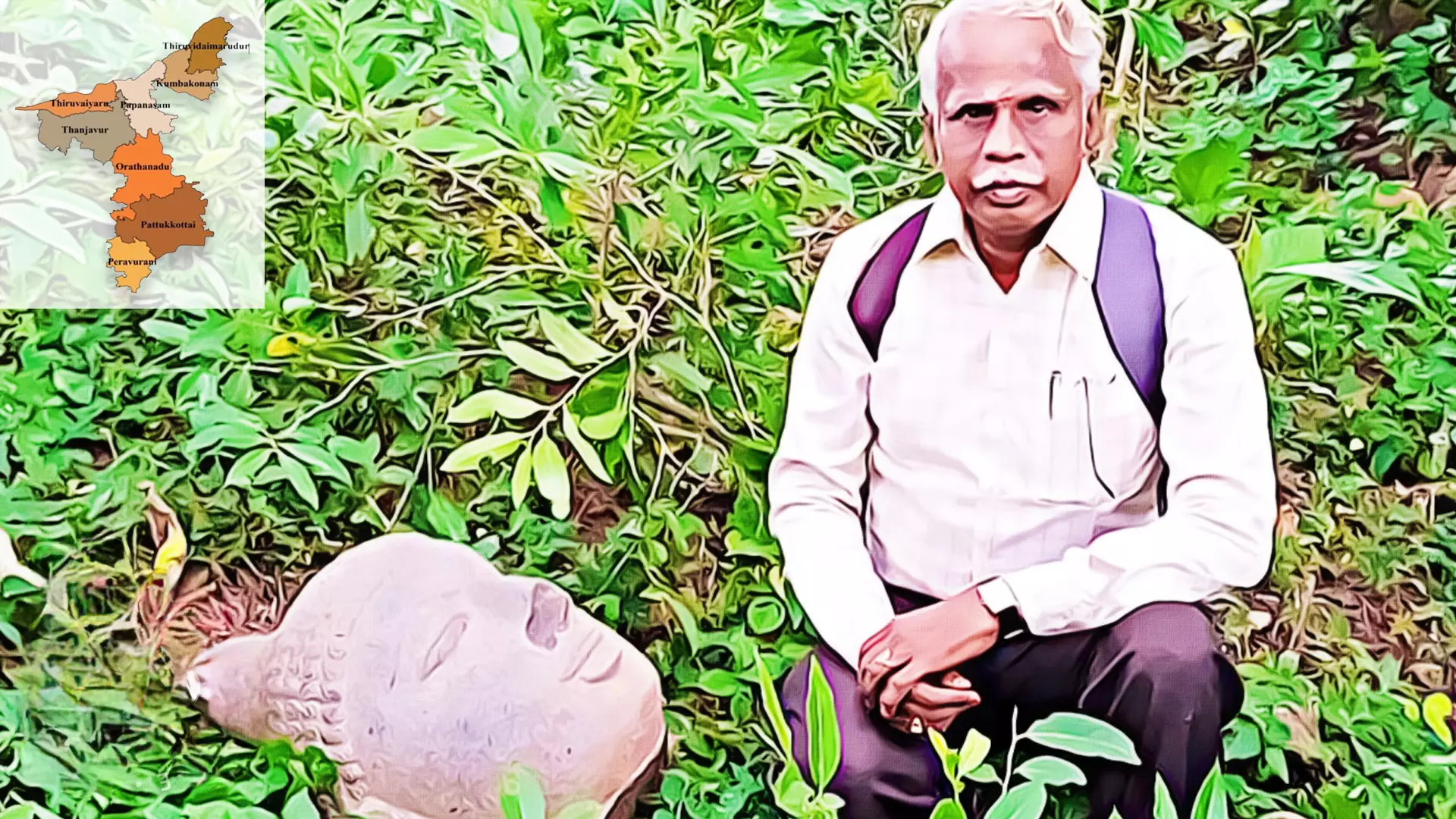
B Jambulingam’s interest in Buddhism began with a visit to a remote village in Thanjavur where the local people had excavated a rock sculpture of the Buddha in the late 1970s. He noted down the height and width of the sculpture on a cigarette cover. He then started travelling to remote villages in search of Buddha sculptures and viharas. He once pedalled more than 25 miles on his old...
B Jambulingam’s interest in Buddhism began with a visit to a remote village in Thanjavur where the local people had excavated a rock sculpture of the Buddha in the late 1970s. He noted down the height and width of the sculpture on a cigarette cover. He then started travelling to remote villages in search of Buddha sculptures and viharas. He once pedalled more than 25 miles on his old Hercules bicycle to see a Buddha idol in Puthur, Tamil Nadu.
Jambulingam has identified more than 76 sculptures — of which 66 are Buddha statues — in the erstwhile Chola country, comprising Thanjavur, Trichy and Pudukkottai districts of Tamil Nadu during his field study since 1990. He has finished editing his book titled Buddhism in Chola Nadu, an English version of his book Chozha Nattil Bautham, which was published by Pudhu Ezhuthu in Tamil in 2022.
The Tamil version evoked tremendous response which encouraged Jambulingam to bring out an English version of it. Although Jambulingam wanted to publish the book in 2000, the idea worked out only in 2022. The delay, however, helped. “The gap of more than two decades helped me carry out field study to many new places and find new Buddha statues,” says Jambuligam, a former assistant registrar of the Tamil University, Thanjavur.
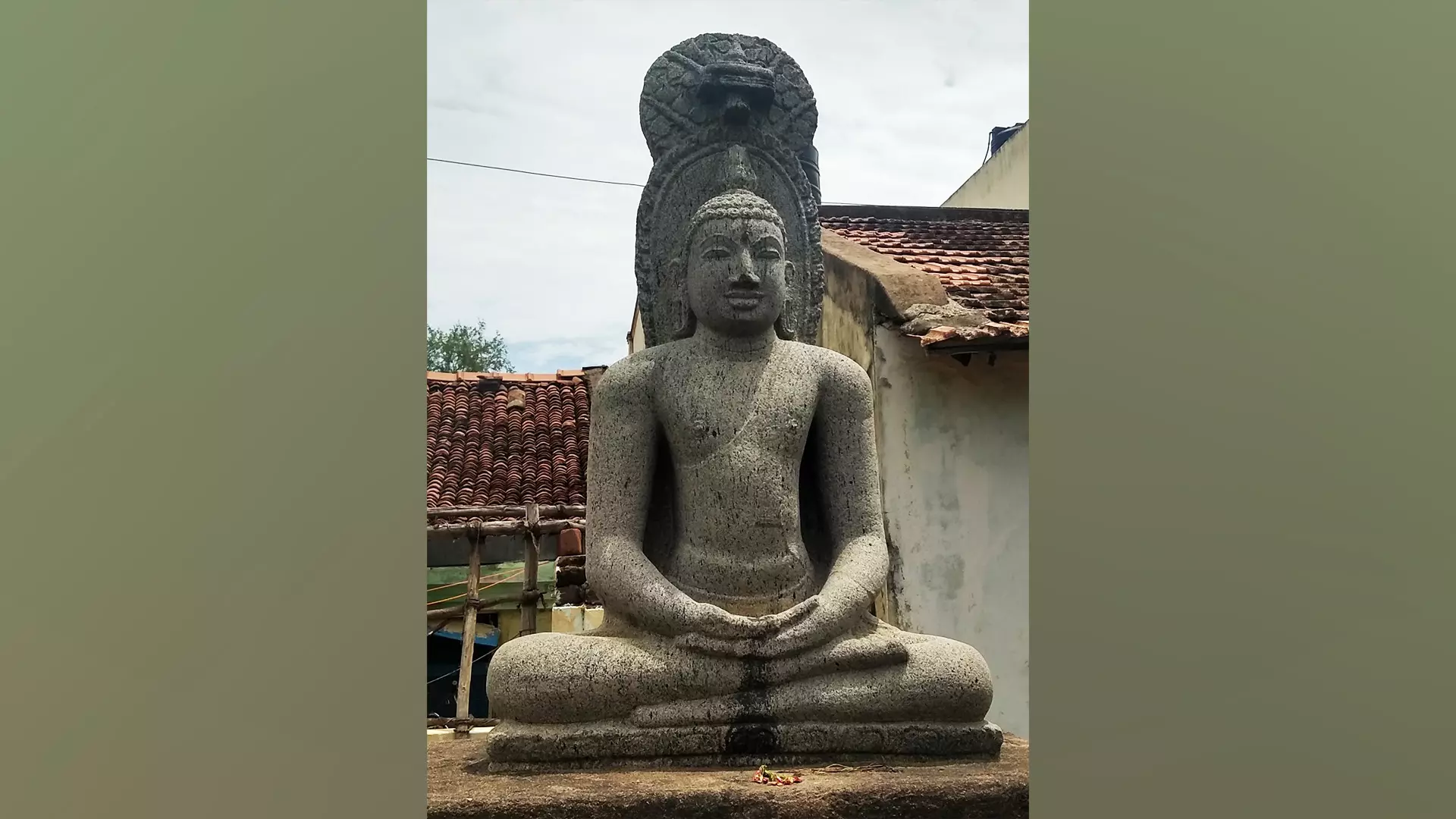
A Buddha statute found in Jayankondacholapuram of Ariyalur district, Tamil Nadu.
“After the publication of my book Chozha Nattil Bautham, many scholars and friends advised me to do it in English so that it would reach more readers and would be very helpful to the field. I have translated many articles from English to Tamil and vice versa. Many such articles were published in reputed dailies and in my blog (https://ponnibuddha.blogspot.com/). So, I finally decided to bring it in English,” he added.
Buddhism in Chola Nadu, however, is not an exact translation of the Tamil version as it includes some recent field studies that Jambulingam conducted. “After the publication of Chozha Nattil Bautham, I continued my field study in Chola Nadu comprising Thanjavur, Nagapattinam, Tiruvarur, Mayiladuturai, Trichy, Karur, Perambalur, Ariyalur, and Pudukkottai districts of Tamil Nadu. The Buddha statue at Thanjavur Museum and the Buddha head found during the field study at Pazhayarai in Thanjavur are the new additions to this English version,” says Jambulingam.
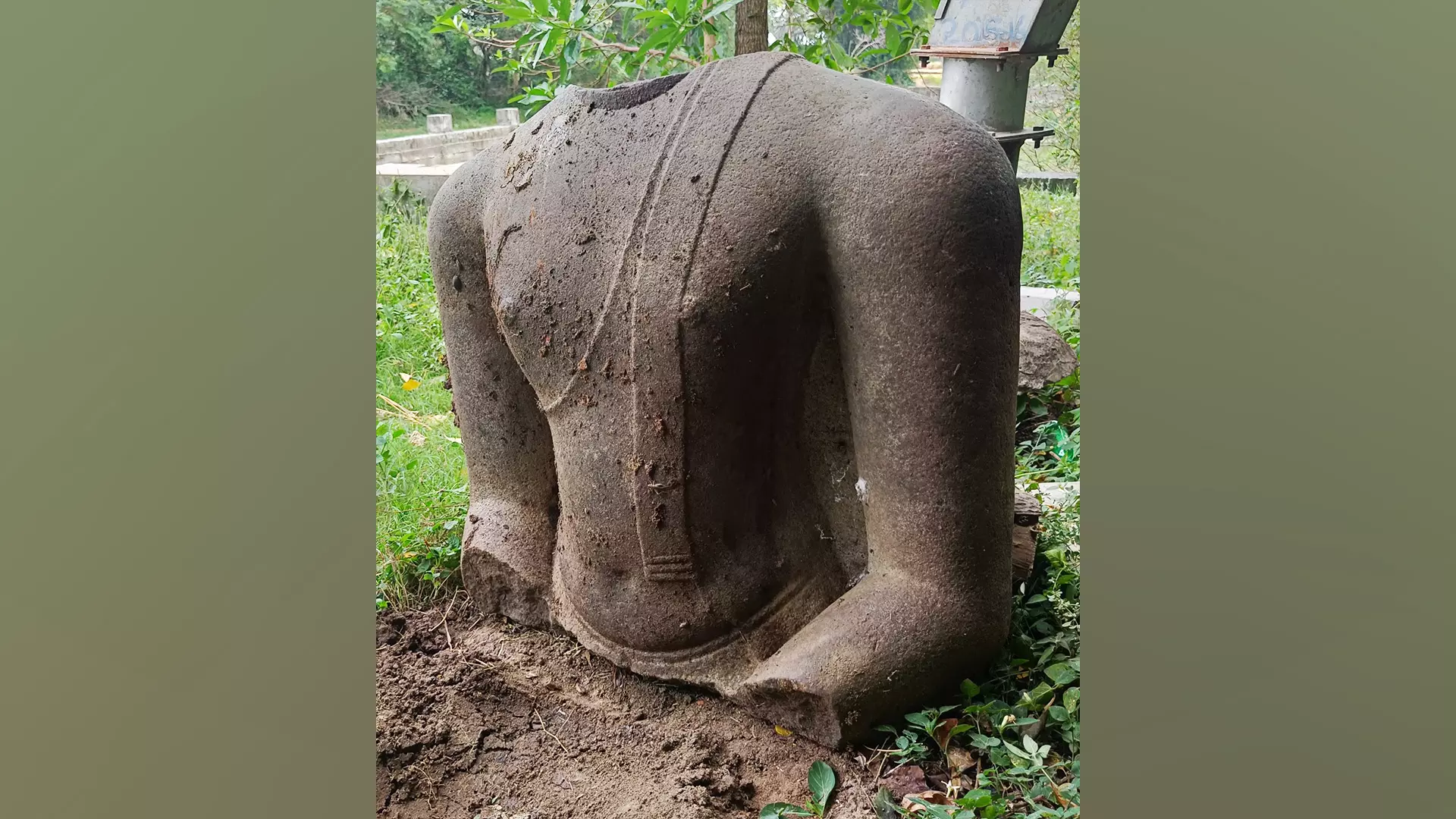
The ruins of a Buddha statue in Ezhumagalur, Mayiladuturai district, Tamil Nadu.
Born in 1959, Jambulingam joined Tamil University, Thanjavur, as a steno-typist in 1982 and retired from service as its assistant registrar in 2017. He completed his MPhil (Buddhism in Tamil Nadu with special reference to Thanjavur district) at the Madurai Kamaraj University in 1995, and PhD (Chola Nattil Bautham) at the Tamil University in 1999. He has listed 76 statues of which 65 are Buddha statues said to have been found in Chola Nadu. The remaining statues are of Jain Tirthankara — Alangudipatti, Kulittalai, Pennakonam, Perumatthur, Tirunagesvaram and Vellanur — Shiva worshipped as ‘Pichandavar’ (Vaidyanatheshwara Temple, Poomal Rawther Street, Keezhavasal, Thanjavur), and Baghava rishi (Baghava Vinayaka Temple, Kumbakonam). Jambulingam said he confirmed the prevalence of the Buddha images by studying the works of scholar-historian Mayilai Seeni Venkatasamy (Bauthamum Tamilum) and others in the field. The information culled out by the author during his field study to hundreds of places for his MPhil, PhD and Project (Buddhism in the Chola country, Nehru Trust for the Indian Collections at the Victoria and Albert Museum, New Delhi, 2002) have been included in the book.
Did today’s Tamil Nadu have Buddhist viharas and temples? “Yes,” says Jambulingam. “In Chola country, the remnants of a vihara are found now at Pallavanesvaram (Melaiyur) in Poompuhar in Mayiladuthurai. There are no remnants of the vihara in Nagapattinam. An inscription at the Kumbeswarar temple in Kumbakonam records the prevalence of a Buddha temple during the 16th century CE in Tiruvilanturai. It refers to the date as 21st of July 1580, the 22nd day of Tamil month of Adi in the Vikrama year during the period of Sevvappa Nayak. But no evidence of the Buddha temple is found there now. Buddha temples are found at Perunjeri in Mayiladuthurai and Buddhamangalam in Nagapattinam,” says Jambulingam.
The book has separate chapters on ‘Rock edicts of Asoka’, ‘Literature and other sources’, ‘Buddhist Viharas and Temples’, ‘Nagapattinam Buddha Bronzes’, ‘Buddha Sculptures’, ‘Granite Buddhas’, ‘Revival of Buddhism’ with an annexure having photographs of the author in the field, the paper clippings of his findings and a complete list of places of Buddha statues recorded by the author and other scholars.
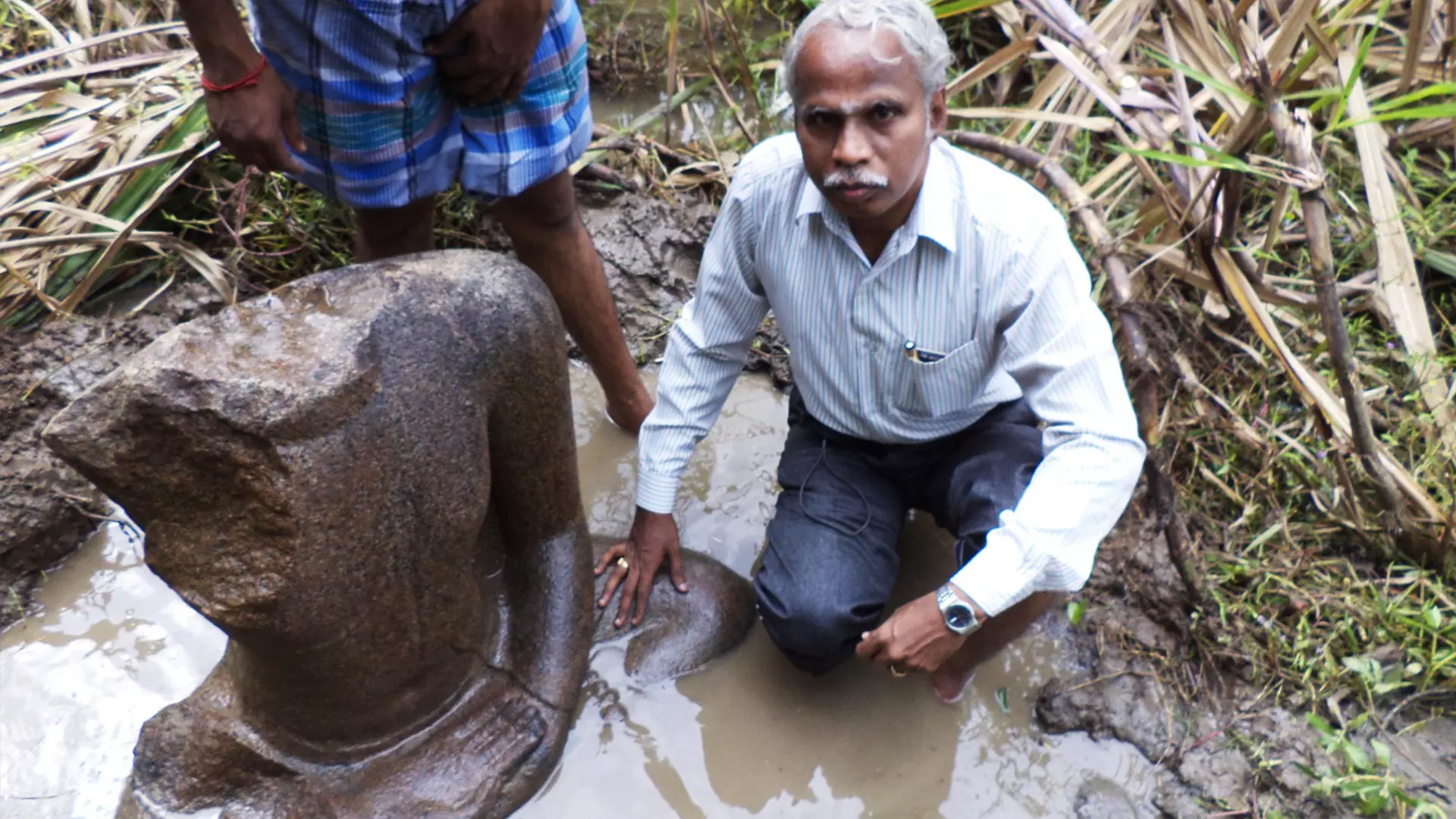
Jambulingam at Manalur in Thanjavur district of Tamil Nadu beside a Buddha statues ruins.
The spread of Buddhism to Tamil Nadu is vouchsafed by Asoka’s Edicts. Jambulingam said the sources such as literature, foreigner’s accounts, inscriptions, copper plates, and others record the spread of Buddhism in Tamil Nadu and especially in Chola Nadu. “In Tolkappiyam, there is no reference to Buddhism. Certain terms in the poems of Akananuru, Purananuru, and Pattupattu lead one to believe that Buddhism had secured a firm place among the Tamils and impacted their behaviour and activities,” he says. Following Buddha, Tiruvalluvar in Thirukkural stresses social equality and records the ethical principles under separate headings, based on Dhammapada, the part of Suttapitaka. “In Chilappathikaram there are references to Buddha monasteries and Bodhi-tree. Manimekalai helps to understand the development of the history of the Buddhist logical texts, and in the epic, the worshipping of the Three Jewels of Buddhism — the Buddha, the Dhamma, and the Sangha — are discussed. Virasozhiyam, Kundalakesi, Siddhanthathokai, Tiruppathikam, Vimbasarakathai, and Buddha Jataka Stories help confirm the prevalence of Buddhism,” he says.
From Nagapattinam, since 1856 CE about 350 Buddhist bronzes in number, votive in purpose, of the Mahayana were recovered from vihara-sites raised by the Sailendras of Sumatra in the time of the Chola king Rajaraja-I and Rajendra Chola-I. Jambulingam, who studied the objects, found that some of these bronzes belong to early Chola (871-1070 CE) period and a large number of the rest to the later Chola period (1070-1250 CE). He said some of the bronze sculptures are inscribed and are exhibited in museums in India and abroad. “They might have been sculpted in Nagapattinam and used for worship in viharas or Buddha temples. Such bronze sculptures found subsequently at Ayyampet, Sellur, and Nagapattinam prove the existence of Buddhism in this area,” says the author.
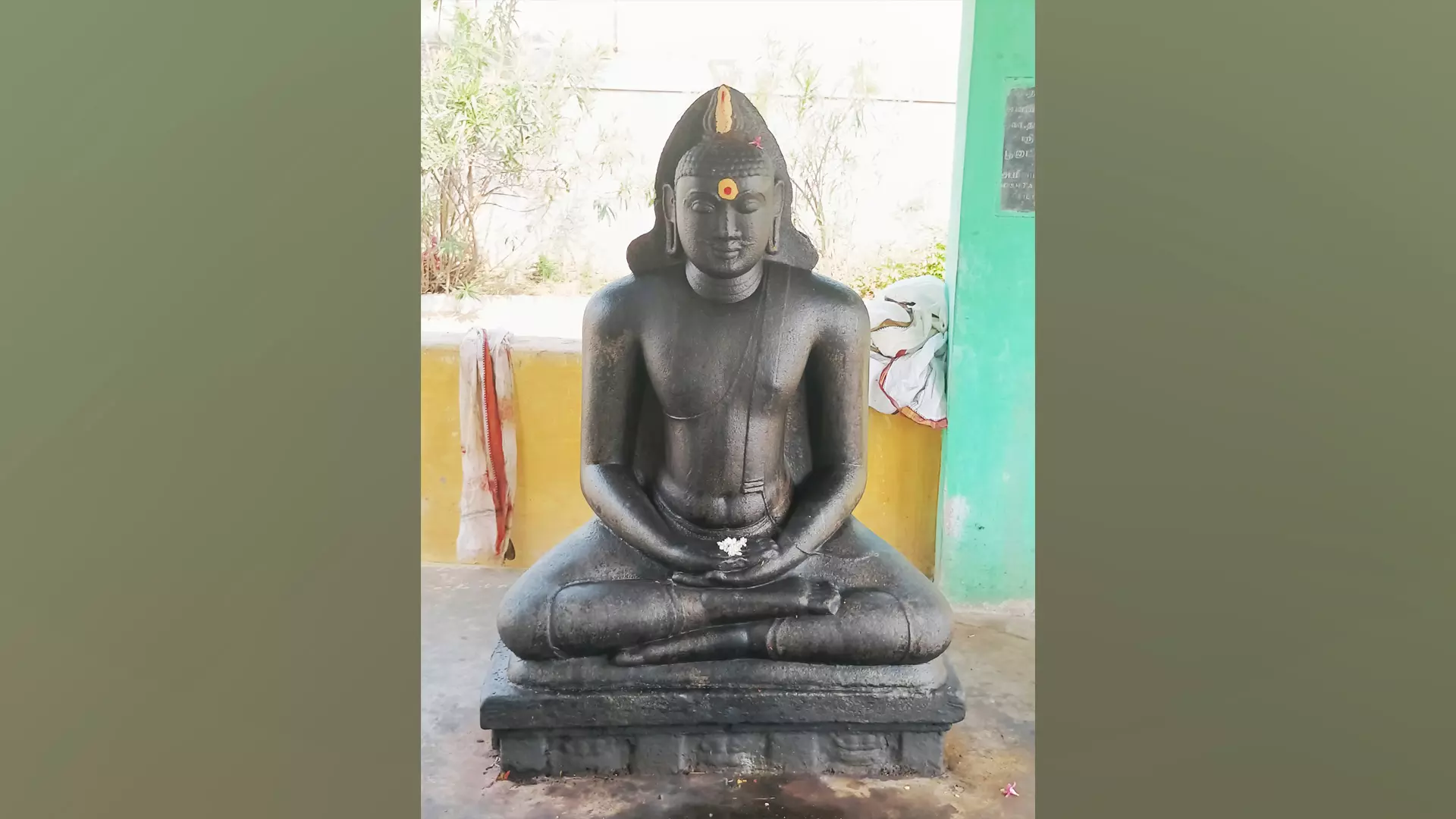
A statue found in Mangalam, Trichy district, Tamil Nadu. This is the Buddha statue found with a moustache.
Similarly, bas-relief Buddha sculptures are found at Brihadeeswarar Temple in Thanjavur, Airavateswarar Temple in Darasuram and Mahalingaswamy Temple in Thiruvidaimarudur. “This shows the patronage given by the kings to Buddhism since the Chola period. Though the Buddha sculptures of Thanjavur and Darasuram are referred to as Vishnu, they are Buddhas,” says Jambulingam.
The granite Buddhas, however, confirm the existence of Buddhism. “Many Buddhas are found in sitting dhyana poses. They have all or some of the iconographical aspects such as half-closed eyes, elongated ear-lobes, smiling lips, urna mark on the forehead, curls of hair, flame on the top of the head, prabha behind the head, trivali on the neck, wide chest, broad shoulders, upper garment, lower garment, visible navel, and dharmachakra mark on the right palm. Some of these aspects are found in standing Buddhas. They might have existed in the Buddhist ‘pallis’ and temples and worshipped,” he says. Buddha is worshipped in many names such as ‘Amanar’, ‘Ammanasamy’, ‘Chettiar’, ‘Rajakumaran’, ‘Sivanar’, ‘rain invoking God’, ‘Nattukkottai Chettiar’, ‘debtor’, ‘lender’, ‘deponent’, ‘Samban’, ‘Rishi’, and ‘Pazhuppar’.
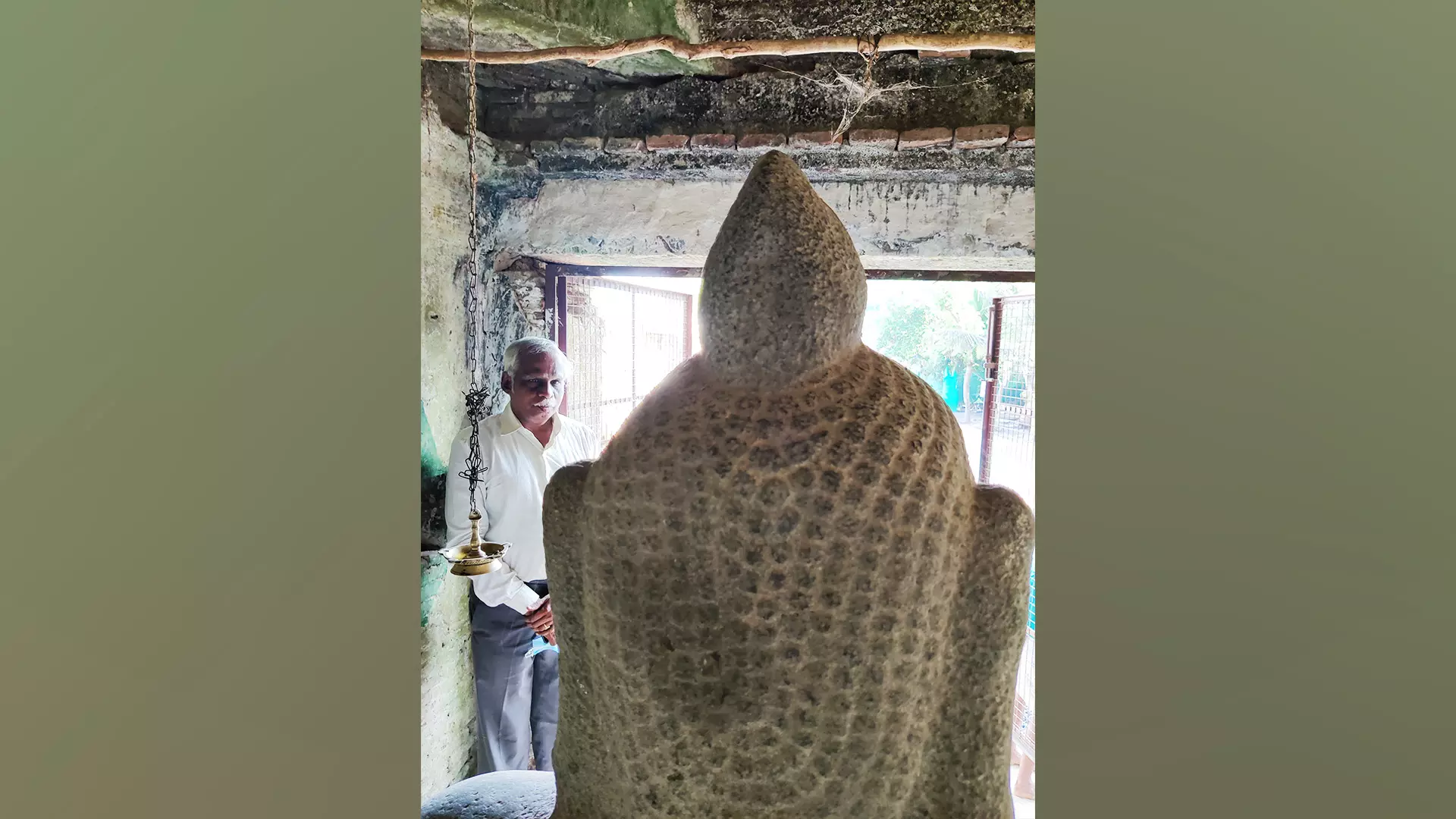
B Jambulingam at a Buddha temple in Perunjeri, Tamil Nadu.
Worship of Buddha in many places proves the revival of Buddhism in Chola Nadu. In Tamil Nadu, many Buddha statues were referred to as Jain Tirthankaras and vice versa. From the field study, Jambulingam learnt that in due course the people started to understand the differences between them. However, what is disturbing is that some Buddha statues that he documented during his first trip are missing now. In his book, the Buddhist scholar discusses the challenges in preserving the abandoned and neglected sculptures of the Buddha including the ‘missing’ ones in Tamil Nadu.
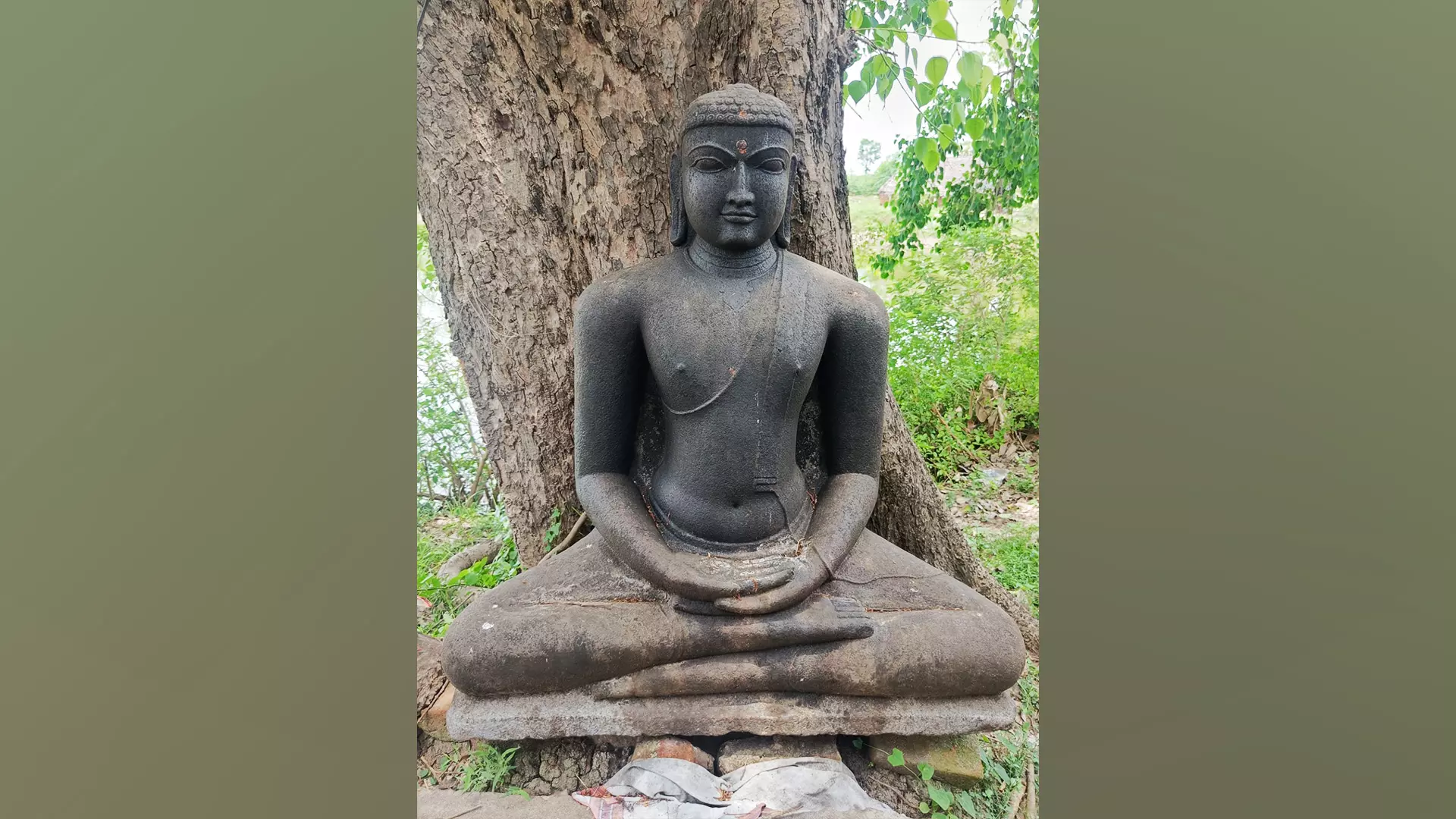
A Buddha statue in Puthur, Tiruvarur district of Tamil Nadu.
“Though some statues have been shifted to museums, the status of other statues could not be confirmed. Some of them were headless while in some places only the head portion of the Buddha statue was found. Religious intolerance would be the reason. Many statues which were found earlier are missing without any trace. One should ensure that such incidents should not happen in the future,” says Jambulingam.
Published by Pudhu Ezhuthu, Buddhism in Chola Nadu will be released in January 2024.

